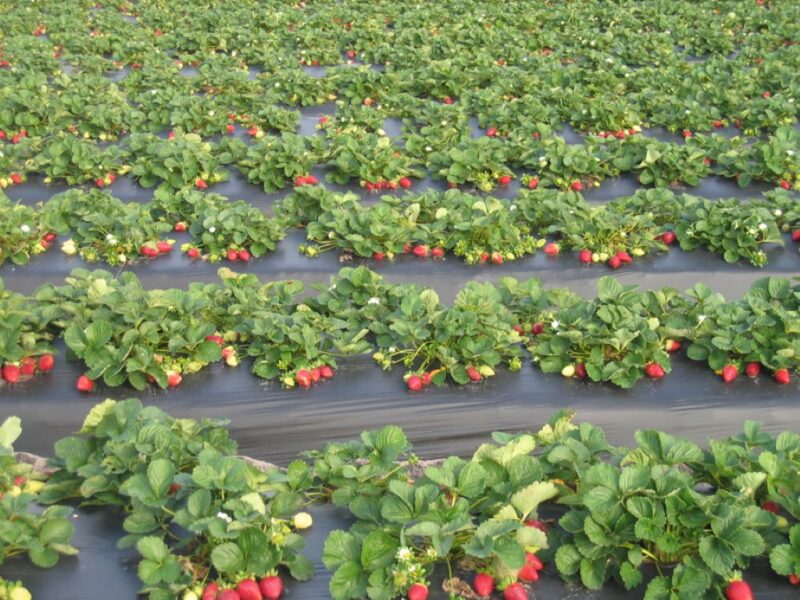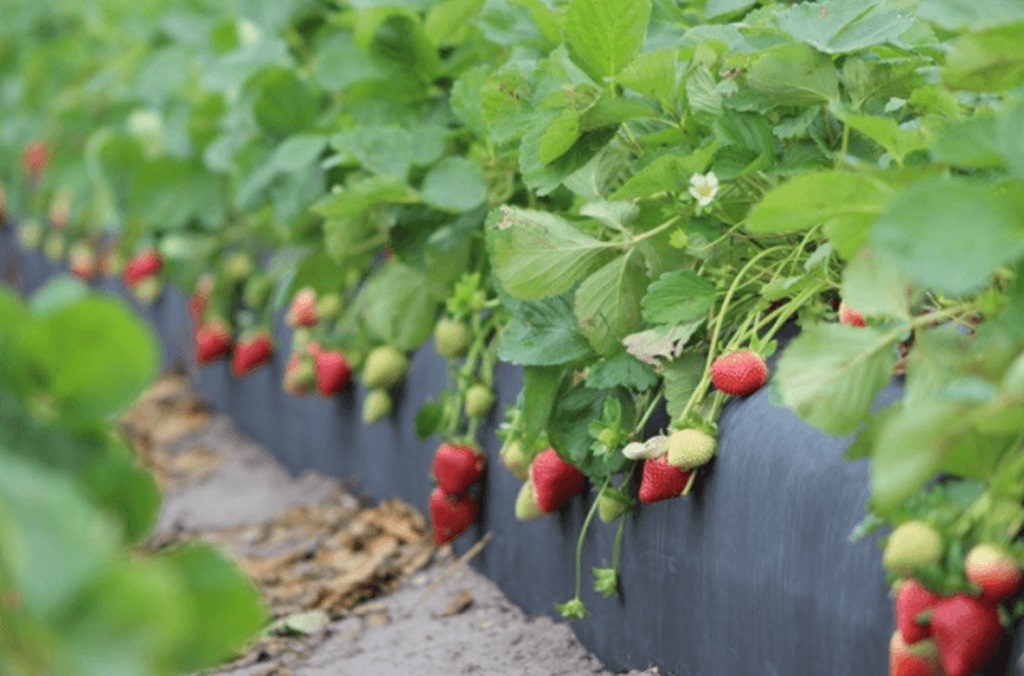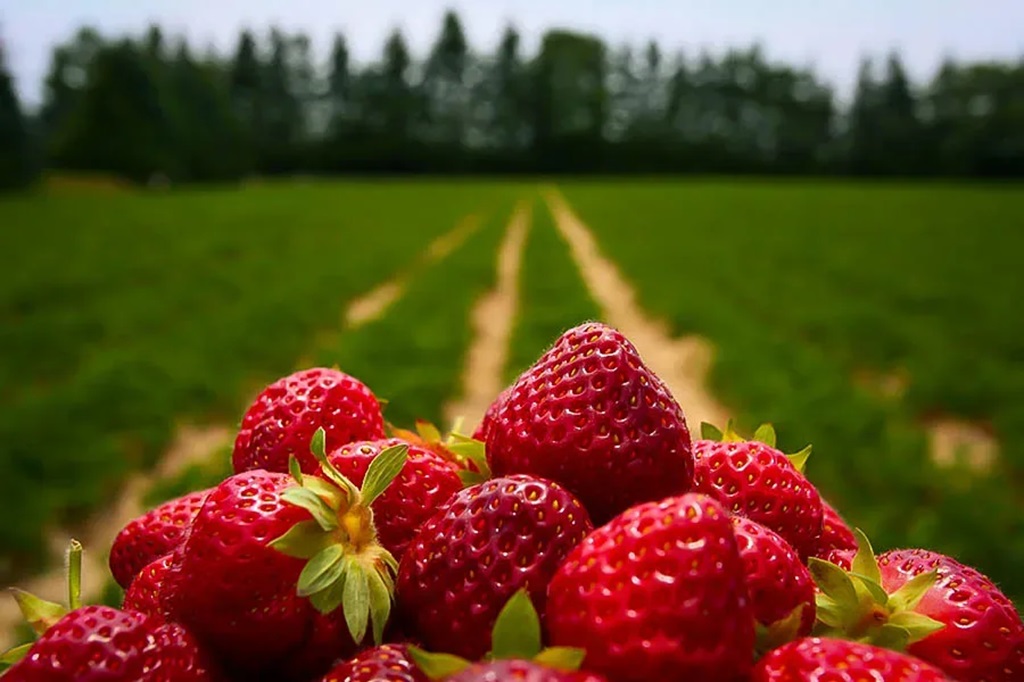Growing strawberries in Florida requires proper soil preparation, sun exposure, a consistent watering schedule, and resistance to pests and diseases. With the right conditions, strawberries can thrive in the warm climate and produce abundant harvests.
Florida’s long growing season provides ample opportunity to cultivate this popular fruit, whether in gardens or containers. The following guide will provide essential tips and techniques to ensure success in growing strawberries in Florida. From selecting the right strawberry varieties to maintaining optimal growing conditions, this article will equip you with all the necessary knowledge to cultivate delicious strawberries in the Sunshine State.
So, let’s get started on your journey to becoming a successful strawberry grower in Florida!
Best Variety Of Strawberries For Florida
Discover the best strawberry varieties for successful cultivation in Florida’s climate. With options like the Florida Radiance and Sweet Sensation, gardeners can enjoy flavorful berries suited to the state’s conditions. These varieties thrive in the state’s warm climate and provide an abundance of delicious strawberries for your home garden.
Best Variety of Strawberries for Florida When it comes to growing strawberries in Florida, choosing the right variety is essential for success. The unique climate and soil conditions in Florida require strawberry plants that can thrive in the heat and humidity. To help you make the best selection for your Florida garden, we have considered the climate and soil and identified the recommended strawberry varieties.
Consider Climate And Soil
The warm and often humid climate of Florida presents challenges for strawberry cultivation, a fact well understood by growers like https://aliceswonderlandnursery.com/. Strawberries prefer cooler temperatures, ideally between 60°F and 80°F. However, certain varieties have been bred to tolerate the warmer Florida climate. When selecting strawberry varieties for Florida, it is crucial to consider the soil conditions as well. Strawberries prefer well-drained soil that is rich in organic matter. Sandy loam and sandy soil, which are often found in Florida, can drain water quickly, impacting the choice of strawberry varieties suitable for this environment.
Recommended Strawberry Varieties
To ensure a successful strawberry harvest in your Florida garden, consider the following recommended strawberry varieties:
- Florida Radiance
Florida Radiance is a popular choice for Florida gardeners. This variety is known for its high productivity and excellent flavor. It performs well in the warmer climate, producing juicy and sweet strawberries.
- Sweet Sensation
Sweet Sensation is another recommended variety for Florida. It thrives in the heat and humidity, producing large, flavorful berries. This variety is also resistant to certain diseases commonly found in Florida.
- Festival
Festival is a versatile strawberry variety that can grow well in various climates, including Florida. It is known for its high yield and excellent flavor. Festival strawberries are typically ready for harvest in the early to mid-season.
- Treasure
Treasure is a newer variety that has gained popularity in Florida. It offers exceptional disease resistance, making it a great choice for organic gardeners. These strawberries are sweet, firm, and perfect for enjoying fresh or in desserts. In addition to these recommended varieties, other popular choices for Florida include Chandler, Radiance, and Camarosa. These varieties have proven to be successful in the Florida climate and provide a bountiful harvest of delicious strawberries.
Remember, the success of growing strawberries in Florida depends on selecting the right variety that can thrive in the unique climate and soil conditions. By considering the climate and soil, and choosing from the recommended varieties, you can enjoy a fruitful strawberry harvest in your Florida garden.
Preparing The Soil For Strawberries
Growing strawberries in Florida, whether in the ground or through methods like strawberry growing in pots, can be a rewarding endeavor. However, to ensure a successful harvest, it is crucial to prepare the soil properly. The right soil conditions will help your strawberry plants thrive, resulting in healthy and delicious fruits. In this section, we will discuss two important steps in preparing the soil for strawberries – testing and amending the soil, and implementing raised beds. These steps are essential to create the ideal environment for strawberry plants, helping them to flourish in Florida’s unique climate and soil conditions.
Testing And Amending Soil
Testing your soil is the first step towards creating an ideal environment for growing strawberries. Conducting a soil test will provide valuable insights into its pH level and nutrient content. Florida soil is often sandy and slightly acidic, which can affect the growth and development of strawberries.
To perform a soil test, collect soil samples from different areas of your garden. Ensure that the samples are taken from approximately six inches deep. Use a soil testing kit or send the samples to a laboratory for analysis. Based on the results, you will know the precise amendments required to optimize the soil conditions.
Amending the soil involves adding organic matter, such as compost or aged manure, to enhance its fertility and drainage capabilities. It helps to improve the texture of sandy soil by increasing its ability to retain water and nutrients, promoting healthy root growth. Add the recommended amendments based on your soil test results and mix them thoroughly into the top few inches of the soil.
Implementing Raised Beds
Raised beds are an excellent option for growing strawberries in Florida. They provide several advantages, including improved drainage, reduced weed competition, and better soil temperature regulation. Implementing raised beds allows you to have better control over soil conditions specific to your strawberry plants.
To create raised beds, choose a sunny location in your garden. Make sure the area receives a minimum of six hours of direct sunlight each day. Build rectangular beds that are about 8-10 inches high, with a width of 2-3 feet. This provides ample space for the strawberry plants to spread and allows easy access for maintenance and harvesting.
Fill the raised beds with a well-draining mixture of soil, compost, and sand. Ensure the soil is loose and friable to facilitate root growth and prevent waterlogging. You can also add additional organic matter or perlite to further improve its structure. Keep the soil level slightly below the top edge of the raised bed to prevent erosion.
Incorporating raised beds into your strawberry-growing process promotes optimal soil conditions and helps to maximize your harvest. By following these steps to prepare the soil, you are one step closer to enjoying a bountiful crop of juicy, flavorful Florida strawberries.
Optimal Planting And Care Techniques
Growing strawberries in Florida requires precise attention to planting and care techniques. From the ideal planting time to proper irrigation and fertilization, each step is crucial to ensure bountiful harvests of juicy, flavorful berries.
Ideal Planting Time
When growing strawberries in Florida, planting during the fall or winter maximizes the chances of successful growth. Select a sunny location with well-drained, sandy soil to give the plants the best chance of thriving.
Proper Irrigation And Fertilization
For optimal growth, provide consistent moisture to the plants. A drip irrigation system is ideal, as it delivers water directly to the roots without wetting the foliage. When it comes to fertilization, use a balanced, slow-release fertilizer to supply essential nutrients to the plants.
Pest And Disease Management
Growing strawberries in Florida can be a rewarding venture, but it’s not without its challenges. Pest and disease management is a crucial aspect of successful strawberry cultivation, as these plants are susceptible to a variety of pests and diseases that can hinder their growth and productivity. In this article, we will explore some common pests in Florida and effective disease prevention methods for thriving strawberry plants.
Common Pests In Florida
Florida’s warm and humid climate provides favorable conditions for the development of various pests that can damage strawberry plants. It’s important to be familiar with these common pests and take proactive measures to control their population. Here are some pests you should be aware of:
- Spider mites: These tiny pests can cause leaves to turn yellow and develop webbing.
- Aphids: Small insects that feed on the sap of strawberry plants, causing stunted growth.
- Thrips: These slender insects feed on leaves and can transmit viruses to plants.
- Whiteflies: These small, winged insects can cause leaf yellowing and transmit viruses.
- Slugs and snails: These slimy creatures can chew on leaves and fruits, leaving behind unsightly damage.
- Caterpillars: Certain caterpillar species, such as the strawberry leafroller, can feed on foliage and fruits.
Preventing pest infestations through proactive management strategies is essential for maintaining healthy strawberries in Florida.
Effective Disease Prevention
To ensure the health and productivity of your strawberry plants in Florida, it’s crucial to implement effective disease prevention methods. Here are some strategies to keep diseases at bay:
- Selection of disease-resistant cultivars: Choose strawberry varieties that are known to have resistance against common diseases in Florida, such as anthracnose and powdery mildew.
- Proper spacing: Plant strawberries with adequate spacing to allow for proper air circulation, which reduces the chances of disease development.
- Clean gardening practices: Remove and destroy any infected plant debris to prevent the spread of diseases.
- Regular inspections: Monitor your plants regularly for any signs of disease, such as leaf spots or discoloration, and take immediate action.
- Optimal irrigation: Avoid overwatering strawberries as excessive moisture can create an environment conducive to disease development. Utilize drip irrigation systems for efficient water delivery.
- Sanitation: Maintain clean gardening tools to prevent the transmission of pathogens between plants.
- Use of fungicides: In cases where preventative measures are insufficient, applying fungicides can help control fungal diseases.
By implementing these disease prevention strategies, you can significantly reduce the risk of diseases impacting your strawberry crop in Florida.
Harvesting And Storage Tips
Growing strawberries in Florida can be a rewarding experience with the right knowledge and techniques. Once your strawberries are planted and have matured, it’s time to harvest and store them properly to enjoy their delicious flavor all year round. In this section, we’ll discuss some tips on determining fruit ripeness and best practices for storage.
Determining Fruit Ripeness
Knowing when to harvest strawberries is crucial to ensure that you pick them at their peak of sweetness. Here are some key indicators to help you determine fruit ripeness:
- The berries should be fully red, with no traces of green or white.
- The fruit should be firm but not too hard. Avoid picking strawberries that are mushy or overripe.
- Check the size of the berry. The larger the strawberry, the sweeter it will be.
- Inspect the color of the seeds on the exterior of the fruit. If they are brown or black, it’s a good sign that the strawberry is ripe.
- A pleasant, sweet aroma is another indication of ripeness.
Once you’ve determined that your strawberries are ripe and ready to be harvested, it’s time to move on to the storage stage.
Best Practices For Storage
Proper storage is essential to preserve the flavor and freshness of your harvested strawberries. Follow these best practices:
- Handle with care: When harvesting, place the strawberries gently into a container or basket to prevent bruising or crushing.
- Remove any damaged berries: Discard any strawberries that show signs of rotting or mold to prevent them from spoiling the rest of the batch.
- Do not wash: It’s best to avoid washing the strawberries until you are ready to use them. Excess moisture can cause them to spoil quickly.
- Store in the refrigerator: Place the strawberries in a paper towel-lined container or a breathable plastic bag. Refrigeration helps to slow down the ripening process and extends their shelf life.
- Consume within a week: It’s recommended to consume your harvested strawberries within a week to enjoy them at their freshest. They can also be frozen for longer-term storage.
By following these harvesting and storage tips, you can preserve the flavor and quality of your Florida-grown strawberries and savor their delicious taste long after the harvesting season is over.
Frequently Asked Questions Of Growing Strawberries In Florida
Can Strawberries Grow In Florida?
Yes, strawberries can grow well in Florida due to its warm climate and long growing season. With proper care and attention, you can have a successful strawberry harvest in your Florida garden.
When Is The Best Time To Plant Strawberries In Florida?
The best time to plant strawberries in Florida is during the fall, between October and November. This allows the plants to establish strong root systems before the cold winter months and ensures a bountiful harvest in the spring.
How Do You Care For Strawberry Plants In Florida?
To care for strawberry plants in Florida, make sure to plant them in well-drained soil, provide adequate sunlight, water them regularly, and use organic mulch to control weeds and retain moisture. It is also important to fertilize the plants regularly with a balanced fertilizer to promote healthy growth.
Can You Grow Strawberries In Containers In Florida?
Yes, growing strawberries in containers is a great option for Florida gardeners with limited space. Choose a container with good drainage, use a high-quality potting mix, and ensure the plants receive enough sunlight. Regular watering and fertilizing are key to successful container-grown strawberries.
Conclusion
To sum up, growing strawberries in Florida can be a rewarding experience for gardeners. Just as choosing the best fertilizer for sunflowers can significantly boost their growth and bloom, with the right knowledge and techniques, anyone can enjoy delicious, fresh strawberries right from their backyard. By carefully considering the climate, soil, and planting methods, you can ensure a successful and fruitful harvest.
Happy planting!



